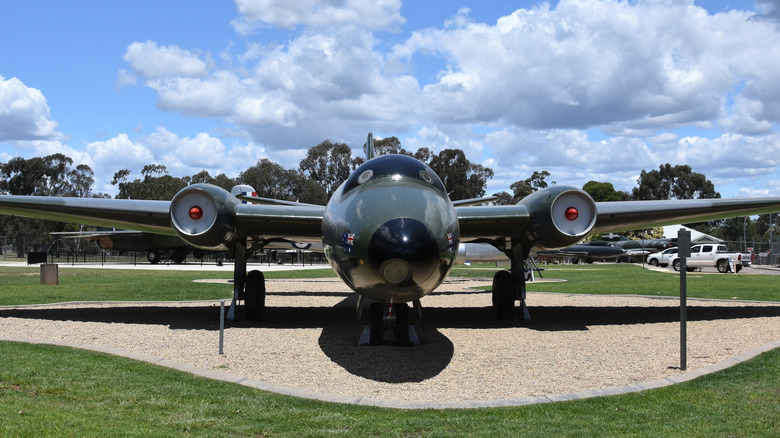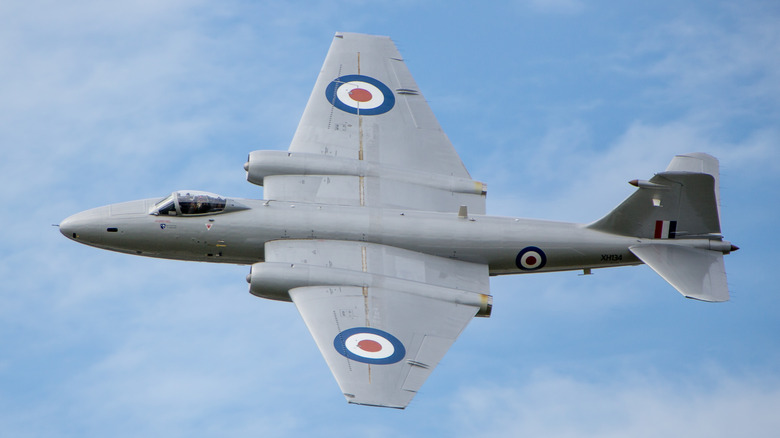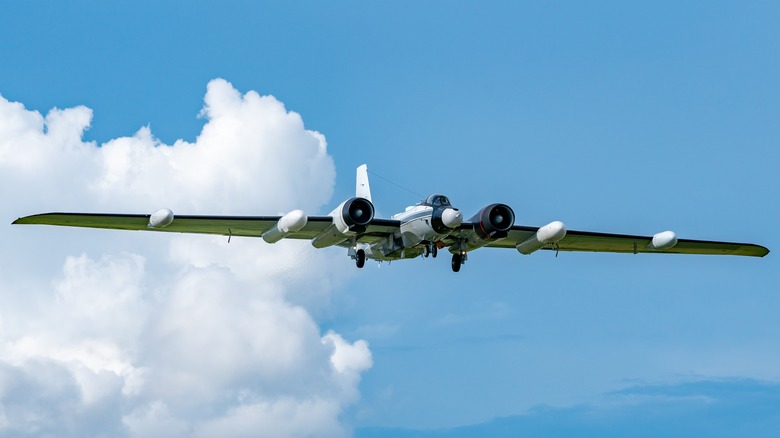The Incredible Versatility Of The Royal Air Force's First Jet Bomber
The end of World War II brought two great paradigm shifts to combat aviation. First, of course, was nuclear power, which changed every aspect of warfare. Second, but no less significant to aviation, was the move from propeller propulsion to jets. The Me 262 and subsequent jet-propelled aircraft triggered a worldwide re-evaluation of what air superiority meant.
In America, solutions for the possibility of a jet-driven nuclear enemy ranged from massive, long-range strategic bombers to the first supersonic interceptors and even air-to-air nukes. Soviet engineers were no less busy, whether they were looking back to biplanes and turboprop bombers, or forward to some of history's most fearsome strike aircraft.
In the midst of Cold War one-upsmanship, however, it may have been a British design that truly set the pace for post-war aircraft development. English Electric's Canberra bomber provided the template for many future innovations in global air war and jet-propelled military hardware.
New bomber on the block
Commissioned all the way back in 1944, the Canberra's design brief was prescient in its analysis of what post-war air combat would be. Per BAE Systems, the British Air Ministry required the Canberra to have "no defensive armament and a high-altitude capability to evade interceptors." The Air Ministry had correctly predicted that WWII-style dogfighting would be less important than being able to deliver ordinance to distant targets at high speeds.
English Electric overdelivered: The combination of a Rolls-Royce Avon engine and optional wingtip fuel tanks gave the Canberra a top speed of 580 mph, and a maximum range of 3,380 miles. The first Canberra prototype flew in 1949, and was fully integrated into the Royal Air Force (RAF) by 1951 — remarkably quick work assisted by straightforward, crew-friendly design.
Once deployed, the Canberra would spend the '50s outperforming every comparable design in speed and altitude. It accrued 19 different speed records during the decade, including multiple speed records crossing the Atlantic, as well as the first British flight over the North Pole.
Plane for all seasons
Crucially, the Canberra bomber was more than an engine with wings. Remarkable range coupled with high subsonic speeds meant the Canberra could outfly and outmaneuver the interceptors of its time. The British jet demonstrated both the possibilities of aerospace engineering and a classic Cold War veiled threat: In the early days of the Nuclear Age, a sufficiently fast plane only had to drop one bomb.
As technology improved and warfare grew more complex, the Canberra continued to deliver, incorporating hardpoints for missiles as well as gun and rocket pods.
Fast, maneuverable, and remarkably versatile, the Canberra became a vital element of NATO's Cold War arsenal. 15 countries would buy and fly Canberras during the model's operational life: Australia, Argentina, Chile, Ecuador, Ethiopia, France, India, New Zealand, Peru, Rhodesia / Zimbabwe, South Africa, Sweden, U.S., Venezuela and West Germany. The U.S. famously used its own take on the design, the B-47 Canberra, as a vital experimental platform for NASA.
The Canberra also ranks among the longest-serving warplanes, with the RAF retiring its last Canberras in 2006. NASA still has a few B-47s in service doing meteorological work, which is no small achievement for a design born in the 1940s.


